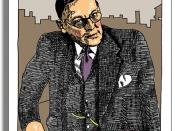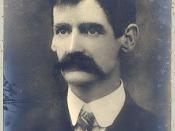ESSAY: RHAPSODY ON A WINDY NIGHT, FACES IN THE STREET, PRELUDES.
In three separate poems the theme of the street is bought out and examined.
It is seen as a grey depressing window into people's lives. Both T.S Eliot and Henry Lawson used the street as a metaphor for the lives of the poor.
Eliot in Preludes seems to be searching for the one good thing amongst all the misery, but Henry Lawson is focusing more on the coming of a revolution which he is sure will change things. Lawsons' style starts off sorrowful, but he becomes more angry and revolutionary where as Eliot is more gentle, more sad rather than angry, and has given up hope that it might change, and is now concentrating on finding a good thing out of a bad situation, an "infinitely gentle thing".
Preludes is the start of a theme that is continued in Rhapsody On A Windy Night.
Rhapsody is a slightly more angry "I can't take it any more" type of poem than Preludes, as represented in the lines "Beats like a fatalistic drum," and "The last twist of the knife".
In Rhapsody, when Eliot says "Hard and curled and ready to snap" he is not just alluding to a spring in a factory yard. He is talking about the people of the street who have been stretched to breaking point by the harshness of life.
The prostitute is a prominent figure in all three of these poems; she is seen as the ultimate victim of the street, of the life that the poor led. She is the worst off, the one who is forced to sell her body in order to survive and because her form of survival is so gruesome, her soul is constituted "of a thousand sordid images".


